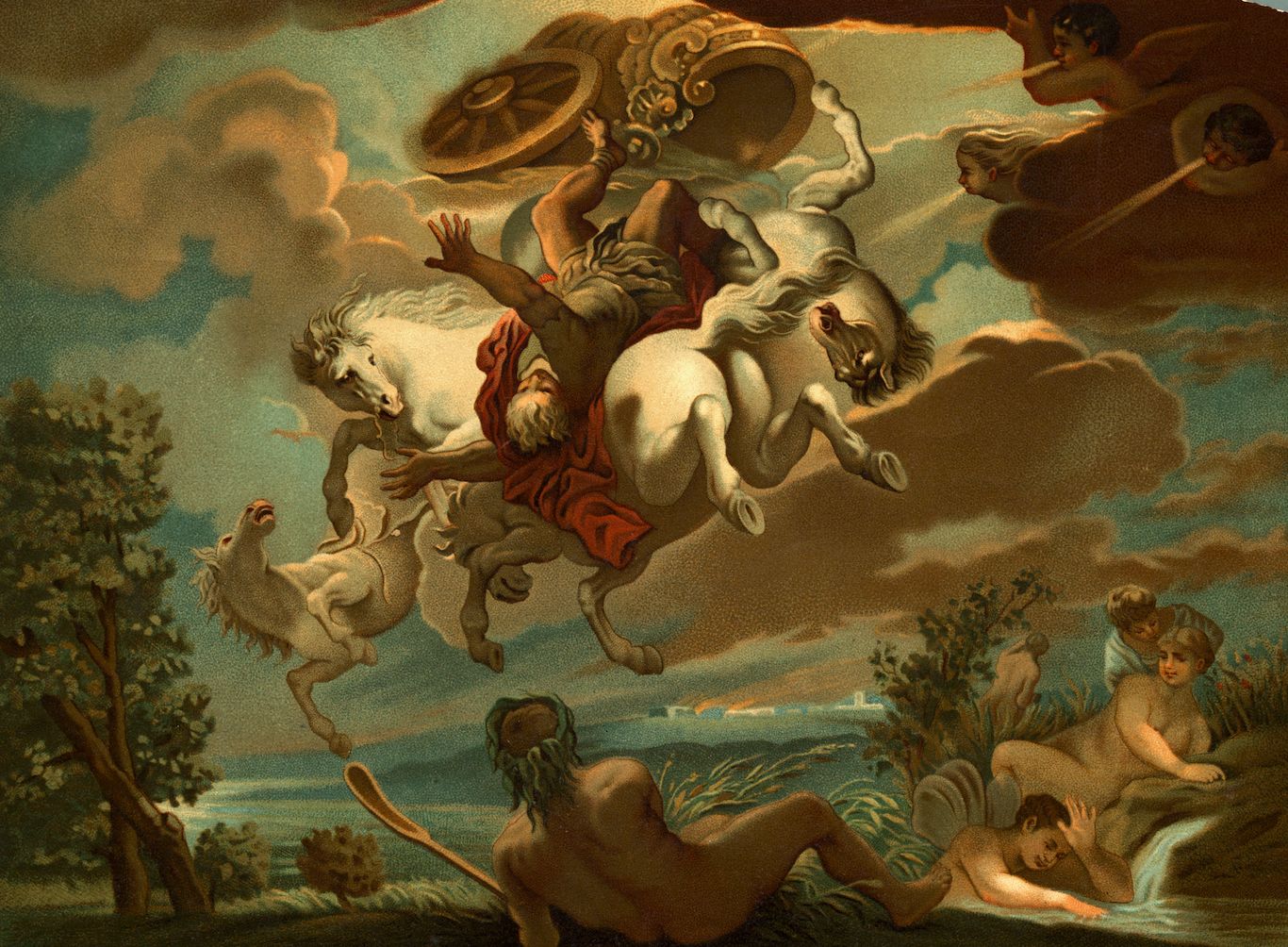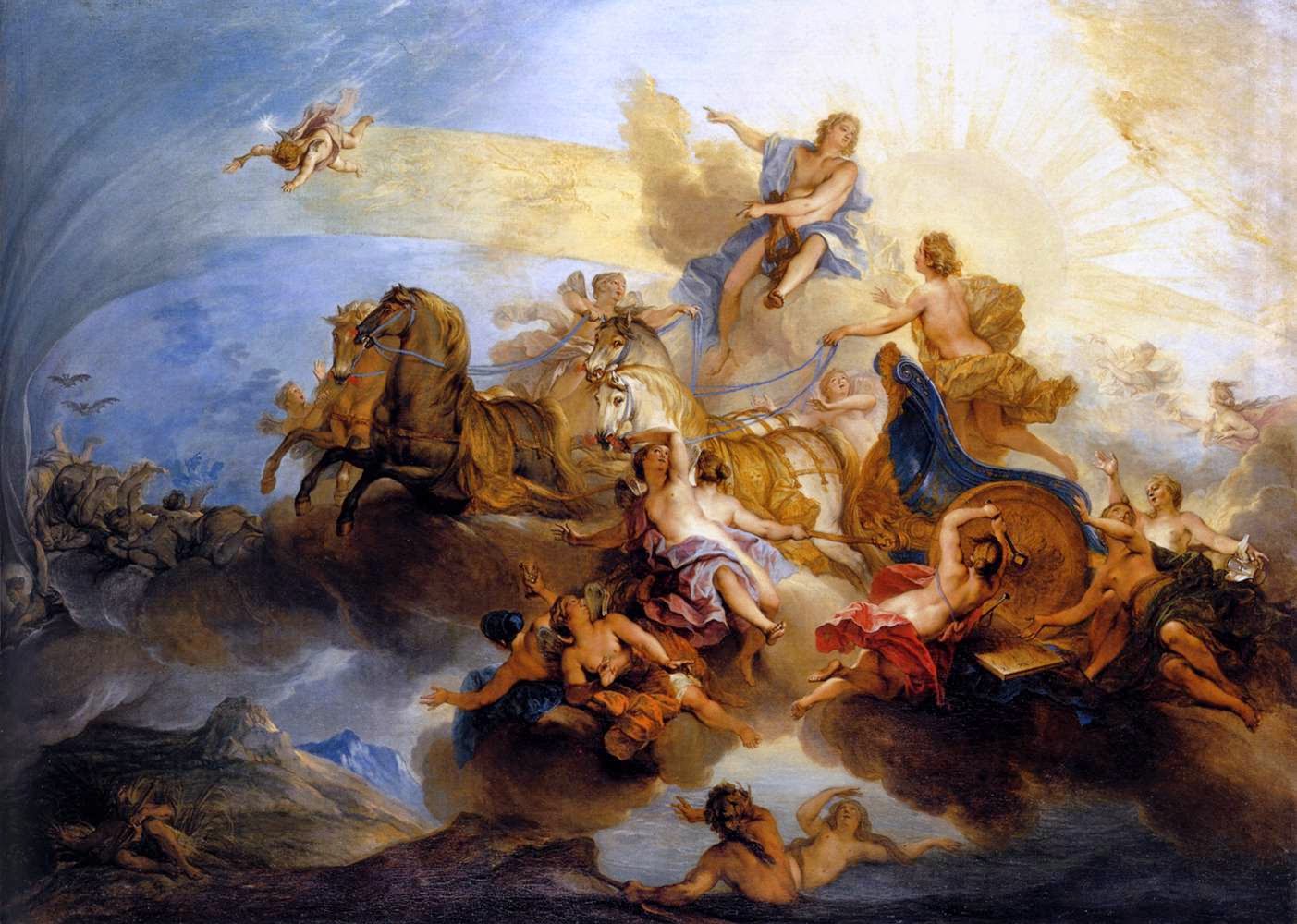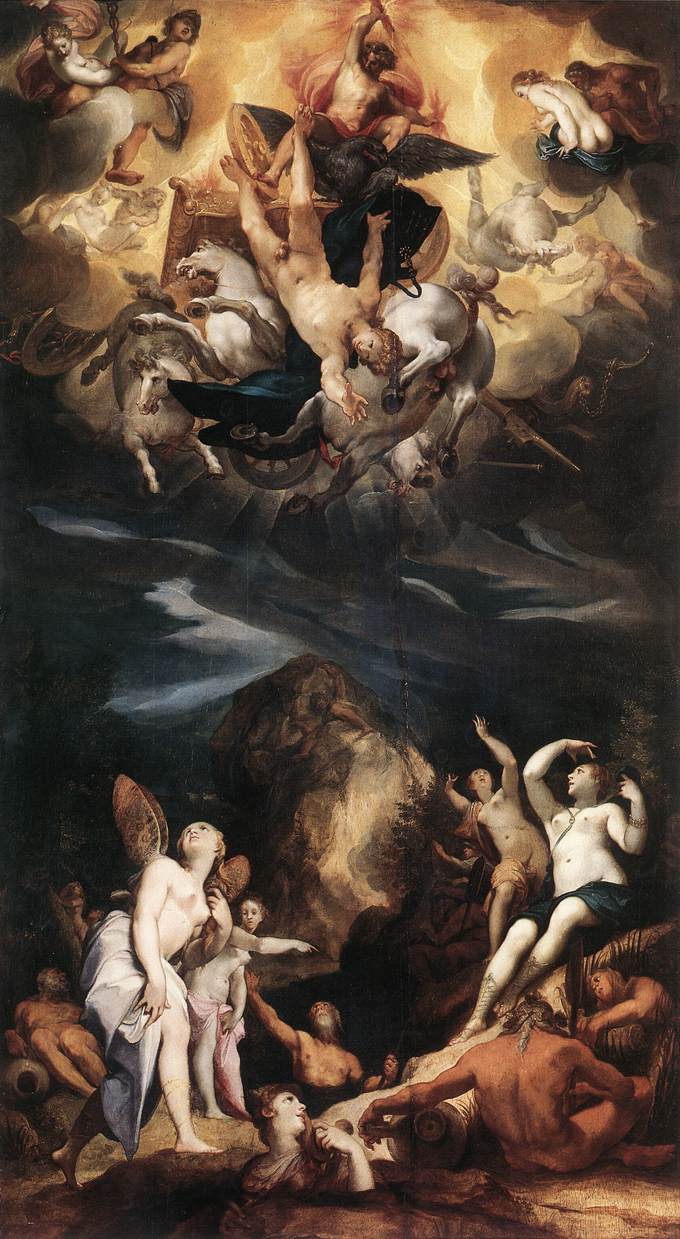Phaethon
The Mythical Charioteer of the Sun and His Tragic End

In Greek mythology, Phaethon, whose name means "the shining one" or "the radiant one," was the son of the nymph Clymene. He did not know the identity of his father, but when he asked his mother, she told him that he was the son of the god Helios.
Phaethon believed Clymene's words and followed the advice of his schoolmate, Epaphus, who questioned the identity of his father. Demanding proof, Phaethon went to his mother, who guided him to seek out Helios by following his chariot to India, the place from where the Sun rises every day.
When Phaethon arrived at the palace of the Sun god, he was astonished. Everything, from the columns to the doors, had been crafted by Hephaestus from gold, silver, bronze, and ivory. Helios sat on his throne, made of emeralds, surrounded by statues of gods and deities representing the passage of time. When Phaethon asked Helios if he was truly his father, Helios not only affirmed it but also promised to fulfill any wish of his. Phaethon, after some thought, asked to drive Helios's chariot for a day.

Helios, realizing the danger, pleaded with Phaethon to reconsider. He explained that the horses were wild and relentless, even if driven by Zeus himself. Moreover, the path in the sky was filled with traps and monsters, such as Scorpio, Leo, Taurus, and Cancer. Helios begged Phaethon to ask for something else, but Phaethon was determined to attempt the impossible. Helios realized he had to comply with his son's wish, as he had sworn by the waters of the River Styx to fulfill any desire of his. Not even a god could break such a sacred oath.
Approaching madness, Helios offered Phaethon every possible advice and applied a cream to his face to protect him from the intensity of the sunlight. Later, as Phaethon began his journey, the horses realized that he was not their usual charioteer. When Phaethon passed the celestial dome's Scorpio, fear overwhelmed him, and he lost control of the reins.
The horses, unstoppable, moved close to the earth and far from it, setting everything ablaze along their path. Not only mountains and cities burned, but also rivers, springs, and fields of crops. According to the poet Ovid, Phaethon's chariot darkened the skin of the Ethiopians, created the Libyan desert, and forced the Nile River to hide its head in the sand. When the goddess Earth could no longer endure it, she appealed to Zeus for intervention. The king of the gods unleashed a thunderbolt at the chariot, killing Phaethon, who fell into a river later named Eridanus (in northern Italy). The god Helios mourned for an entire day, during which the sun did not appear in the sky.

Helios avoided his duty of bringing light with his chariot due to his anger toward Zeus. He believed that Phaethon could have performed the duty better than him. Only after the encouragement of the other gods did he decide to resume his work. However, before taking on his role again, he severely punished his horses for their part in his son's death.
Meanwhile, the nymphs serving Hesperus (the evening star) discovered and buried Phaethon's body. When they completed the burial, two miraculous transformations occurred. Phaethon's friend, Cygnus, was so saddened that the gods decided to place him in the sky as a constellation. The second transformation involved Phaethon's sisters, the Heliades. After mourning their brother at his burial on the riverbank, they tried to stand up, but their bodies had turned into branches, with leaves sprouting from the tops of their heads. Their mother, Clymene, tried to peel away the bark that covered them, but they cried out in pain. Their bodies had turned into poplar trees, and their tears transformed into amber, a precious stone worn by brides in ancient Rome.
According to Ovid, Phaethon's tomb was forever covered by poplars, with the inscription: "Here lies Phaethon, the charioteer of his father. Great was his fall, but great was his daring."